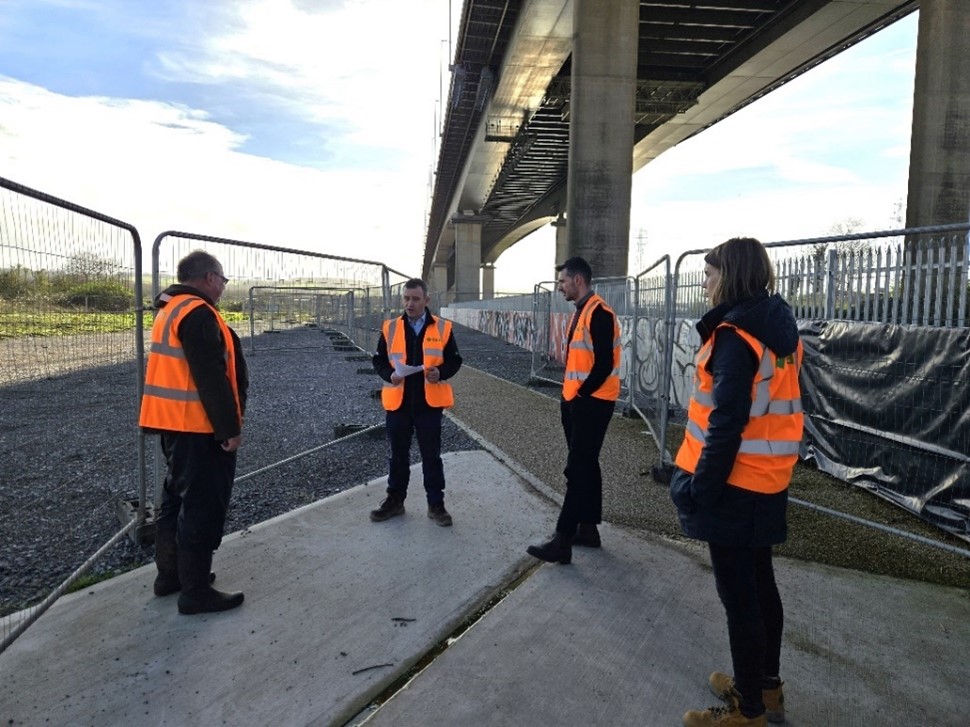Bristol City Council cabinet members visit ASEA Flood Defence Project
On Friday 15 March, we welcomed Bristol City Council cabinet members on a tour of the Bristol City
Council section of the ASEA project. They had the chance to see the progress we’ve made on installing flood defences at Avonmouth Docks and Lamplighter’s Marsh, and creating a new coastal wetland area at Hallen Marsh.
We were delighted to show Councillor Marley Bennett, Cabinet Member for Waste, Climate and Ecology and Councillor Don Alexander, Cabinet Member for Transport and Ward Member for Avonmouth and Lawrence Weston, how habitats for a diverse range of wildlife species are securing the long-term future of one of the country’s most important environments for wading birds.
Now that most of the works to introduce the new flood defences have been delivered, the focus is now on continuing efforts to develop the Hallen Marsh wetland environment and hand the site over to the Council to manage. Future works here will focus on maintaining wetland habitat to give the birds the roosting and foraging habitat they need, particularly when the high tide has covered the mud flats where they feed.
Ursula Stevenson, project lead, said: “We’re delighted that local leaders visited the new wetlands we have created, which enhance our natural environment and provide wildlife with space to thrive in the Avonmouth and Severnside Enterprise Area. It was fantastic that the councillors saw how many bird species are thriving at this new habitat, and they were excited to see how the wetlands develop over years to come.”
Councillor Marley Bennett said: “Through our ecological emergency work, we’re committed to enhancing our natural environment while also improving the environment for people to enjoy, so I’m delighted to see the new wetlands created at Hallen Marsh begin to flourish.”
Our ecological work across the ASEA project doesn’t stop there. Water voles were released into Hallen Marsh in 2023 to make the most of the ditches and vegetation that provide them with the perfect habitat to thrive. The project has also provided a replacement otter holt to allow otters to continue to use an established commuting route. Over one hundred bat boxes are being installed across the project area, along with two barn owl nest boxes. One of these barn owl boxes has already been used to successfully raise three chicks.
This project is an example of how a balance between managing the impacts of climate change, sustainable growth and making space for nature can benefit all.
It was fantastic that the councillors saw how many bird species are thriving at this new habitat"
Ursula Stevenson


